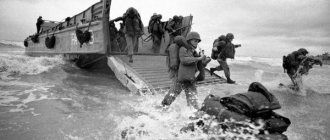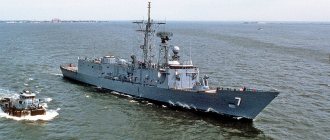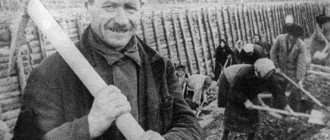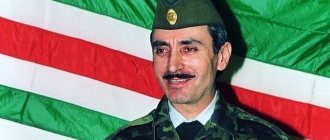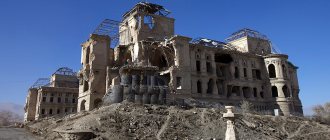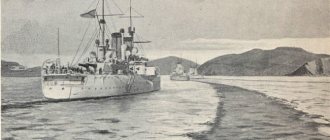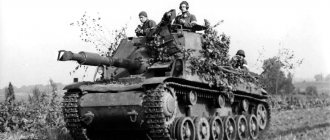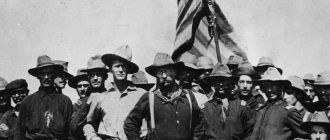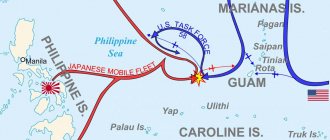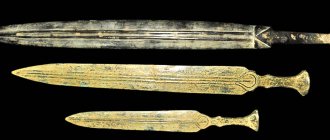Now, against the backdrop of chronic military conflict in this region, few people remember how the series of coups, wars, and destruction began.
After World War II, relative calm reigned in the countries of the Middle East, disturbed only by the Arab-Israeli conflict, which took place in Palestine.
In 1978, the Sheikh of Iran was overthrown by Islamic fundamentalists. Ayatollah Khomeini, who came to power, broke off allied relations with the United States and Israel and decided to extend his influence to the entire region. During the same period of time, a young, ambitious leader, Saddam Hussein, came to power in Iraq. The situation was aggravated by the fact that the Iranian leader supported the Shiites, and the Iraqi leader supported the Sunnis. And this painted the impending military conflict in religious overtones. The two states were doomed to war by the ambitions of their leaders.
Confrontation between Iraq and Iran
Saddam Hussein was optimistic about his strength in the inevitable battle ahead, hoping that he would be able to carry out a blitzkrieg. The reason was found to be quite formal - the disputed state border in the area of the Shatt al-Arab River.
September 1980 marked the beginning of the eight-year Iran-Iraq War. The blitzkrieg did not work. If at first the Iraqi troops were successful in advancing into Iranian territory, then two years after the start of hostilities the Iranians launched a counteroffensive. Neither side could win the ground battles. Therefore, bombings of peaceful cities began, attacks with chemical weapons, and ships of neutral states transporting oil from the warring parties also suffered - tankers were sunk by bombs dropped by aircraft.
The world community observed what was happening quite calmly - there were no protests regarding the use of chemical weapons from Western countries. The reason was quite simple: with the advent of the fundamentalists, Iran ceased to be an ally of the United States.
The war brought enormous human and financial losses to the warring parties - up to half a million people in Iraq and up to a million in Iran. Iraq, which before the conflict was one of the richest countries in the region, found itself with 80 billion foreign debt. And he owed 14 of them to the small but very rich state of Kuwait.
Although the Iran-Iraq standoff ended with a United Nations-brokered ceasefire in August 1988, by mid-1990 the two states had yet to begin negotiations for a permanent peace treaty. When their foreign ministers met in Switzerland in July, a peace settlement seemed within reach. But the world community was in for a surprise from the Iraqi leader.
Background to the conflict and the occupation of Kuwait
Kuwait was founded by a group of Bedouin clans in the 18th century on the shores of the Persian Gulf. Its status was uncertain: the Ottoman Empire considered it its territory, but in fact the sheikhs pursued an independent policy. At the end of the 19th century, Kuwait became dependent on Great Britain, and in 1920 it became its protectorate. It gained independence in 1961.
Are you an expert in this subject area? We invite you to become the author of the Directory Working Conditions
Iraq invaded Kuwait, claiming rights to rule the emirate, which Iraqi tradition considers part of the former Ottoman Empire, accusing its neighbor of stealing oil (directional well technology provided by the United States) from border fields and of participating in an anti-Iraq plot.
On August 2, 1990, four Iraqi army divisions entered Kuwait. Due to the military superiority of the enemy, the Kuwaiti army fought holding battles, retreating into Saudi Arabia. By the end of the day, Iraqi forces had taken control of the capital of Kuwait.
The occupation of Kuwait was predetermined by the qualitative superiority of Iraqi troops over the Kuwaiti national army. Iraq had more aircraft and tanks, but was inferior to the Kuwaiti fleet. The al-Kulaya naval base, which was defended by 30 Kuwaiti ships, was captured by two Iraqi missile boats. However, Iraq suffered a setback that affected the development of the crisis: Iraqi special forces failed to capture Emir Jaber III. The helicopter landing in Kuwait encountered air defense resistance, and the special forces suffered significant losses. The emir was evacuated to Saudi Arabia.
Finished works on a similar topic
Coursework The Gulf War (1990-91) 410 ₽ Essay The Gulf War (1990-91) 250 ₽ Examination The Gulf War (1990-91) 190 ₽
Receive completed work or specialist advice on your educational project Find out the cost
A number of sanctions were imposed on Iraq. In response, citizens of states that took part in the sanctions were detained in Iraq. They found themselves in the position of hostages, and Iraq used them for political manipulation.
Invasion of Kuwait
Hussein gave a fiery speech in which he accused neighboring Kuwait of siphoning crude oil from the Al-Rumaila oil fields along their shared border. He insisted that Kuwait and Saudi Arabia write off $30 billion of Iraq's foreign debt and accused them of colluding to keep oil prices low in an attempt to pander to Western countries buying the oil.
To justify the invasion in August 1990, Saddam Hussein put forward the theory that Kuwait was an artificial state founded by colonialists on the coastline that formerly belonged to Iraq. The Iraqi leader did not limit himself to rhetoric - troops began to gather at the border with Kuwait. These actions alarmed Egyptian President Hosni Mubarak, who assumed the intervention of Western countries, including the United States, in this conflict and, unwillingly, tried to resolve the upcoming clash diplomatically. But Hussein did not want to talk - two hours after the start of the negotiations, he interrupted them and on August 2, 1990, Iraqi troops received an order to invade Kuwait.
If Hussein expected that his neighbors would pursue a policy of non-intervention and would not call on the international coalition to help resolve the conflict, then he was mistaken. 14 members of the League of Arab States condemned Iraq's act of aggression, and King Fahd of Saudi Arabia not only granted political asylum to the Kuwaiti government, but also asked the United States and NATO for help in resolving the current situation.
The governments of the United States, Great Britain and the Soviet Union immediately condemned Iraq's actions. The urgently convened UN Security Council adopted a resolution calling on Iraq to cease hostilities against Kuwait. A few days later, the Saudi king met with the US Secretary of Defense and requested military assistance.
The seizure of Kuwait by Iraqi troops was almost lightning fast - already on August 8, Saddam Hussein named it the 19th province. On the same day, the first US Air Force aircraft landed in Saudi Arabia for Operation Desert Shield.
NATO troops were also deployed with Egypt and several other Arab states to defend against a possible Iraqi attack on Saudi Arabia.
Progress of hostilities
On the night of August 1-2, 1990, 120 thousand Iraqi soldiers crossed the border between Iraq and Kuwait. Kuwait could do almost nothing to oppose its enemy. The entire strength of the Kuwaiti army at that time was only 20 thousand people. In addition, despite the tension of the situation, the army was not brought to a state of combat readiness. But, despite this, Kuwait tried to defend itself: individual units showed themselves very bravely in battles with superior enemy forces. The main battles took place right in the capital near the Dasman Palace. The Kuwaiti emir and his advisers managed to leave the palace before the Iraqi army arrived, but the emir's brother was killed in the battle for Dasman. The palace was taken only at the end of the day.
By the evening of August 2, the entire territory of the small emirate was occupied, and the Kuwaiti navy was in the hands of Iraq. The invaders engaged in looting and committed violence against local residents. Power in Kuwait was transferred to the newly created “Free Provisional Government of Kuwait”, which was completely dependent on Baghdad.
The world community was outraged by the actions of the Iraqi authorities. The United States had its own economic interests in the region. They feared that after success in Kuwait, Saddam Hussein would also want to seize Saudi Arabia, becoming the owner of almost all the oil deposits in the region. At first, at NATO meetings, the opinion was more often voiced that Iraq should be influenced through economic sanctions. But already on August 6, it was decided to send a military contingent to the Persian Gulf. In this situation, it would be beneficial for the USSR to support Saddam Hussein. Like Iraq, the Soviet Union had been dependent on oil supplies since 1972, and low prices on the fuel market had hit Soviet citizens hard. A conflict in the Middle East would allow prices to rise and somewhat besiege the United States, a longtime rival of the USSR. But the foreign policy situation and the ideas of “perestroika” inclined the Soviet leadership to a pro-Western position. Mikhail Gorbachev condemned the Iraqi aggression and advocated a peaceful solution to the conflict. At the same time, the USSR stopped supplying weapons to Iraq.
George Bush expressed the opinion that in order to establish order in the Middle East, the regime of Saddam Hussein, which the American president called anti-democratic, should be eliminated. At the same time, the United States did not at all seek to completely destroy the military power of Iraq. To maintain balance and prevent Iran from increasing its influence, the United States was interested in maintaining a relatively strong Iraq. As part of the pacification of the region, the United States and other countries (in total, the military forces of 41 states officially took part in the war, including Great Britain, France, Saudi Arabia, Israel, etc.) carried out the following actions:
- They established a naval blockade in the Red and Mediterranean Seas. The tasks of the patrol ships included inspection and escort of suspicious ships. In response to this, citizens of countries participating in the blockade were arrested in Iraq. Until the end of the year, these people were held hostage in Iraq.
- Conducted Operation Desert Shield to protect Saudi Arabia. In the first days of August, border conflicts began on the Kuwait-Arabian border between Iraqi troops and Saudi border guards. Riyadh turned to Washington for help. The Western allies sent approximately 2 thousand combat aircraft, 1.5 thousand helicopters, 4 thousand tanks, several thousand guns and military equipment, as well as several hundred ships and 600 thousand soldiers to the Persian Gulf region. At the same time, Egypt, Italy and Spain opened water and air space for the passage of American combat vehicles. To transport such a huge amount of special equipment and fuel, the United States even had to charter merchant ships. The statistics available today demonstrate with what enormous speed and in what huge quantities cargo was delivered from the United States and Europe to the Middle East. Such a large-scale and rapid transfer of people and equipment has never happened before in any war.
As part of Operation Desert Shield, regular combat exercises were held. This was necessary so that the multinational forces of the anti-Iraq coalition would work together and so that the soldiers would learn how to handle the latest weapons: SLAM cruise missiles, the latest modifications of M2 Bradley infantry fighting vehicles and Abrams tanks, etc.
Iraq could oppose the Western allies with 780 thousand people, 5 thousand tanks, 7 thousand combat vehicles, 700 combat aircraft and several thousand artillery systems. Contrary to popular belief, Iraq had very good weapons; approximately 30% of its military equipment was quite modern.
Saddam Hussein understood what a formidable opponent he would face. On August 8, he declared Kuwait part of Iraq (formally, the initiative to join came from the puppet pro-Iraqi “free government of Kuwait”). The Iraqi leader hoped to reach a compromise with the Western powers: to exchange Kuwait's freedom for certain concessions from the United States. Of course, the ideal way out of the situation for Iraq would be the withdrawal of NATO forces from the region and the conclusion of a new oil agreement with the United States, which would stipulate higher prices. 10 years ago, Washington supported Iraq in the war with Iran, so Saddam believed that this time he would be forgiven for aggression against a neighboring state.
The deployment of the Western group of troops in Saudi Arabia continued for several months. If Saddam Hussein had decided to strike at his allies before the transfer of people and weapons was completed, perhaps he would have been able, if not to win the war, then at least to inflict serious damage on the enemy. But here the psychological factor came into play. The Iraqi leader was afraid to start a war and missed the opportunity.
Operation Desert Storm (January 17 – February 28, 1991)
On November 29, 1990, the UN Council adopted a resolution on the withdrawal of Iraqi troops from Kuwait. The resolution stated that if Kuwait was still occupied after January 15, 1991, NATO forces would immediately begin military action against Iraq.
Since this ultimatum was ignored, Western countries began a military operation called Desert Storm. Throughout the fall and first half of winter, Iraq prepared to repel the attack. Powerful fortifications with trenches and multi-meter ramparts (“Saddam Line”) appeared on the Kuwait-Saudi border. Similar stripes were located on the coast to prevent amphibious landings.
Since Iraq had a huge number of tanks, the allied countries did not dare to launch a ground offensive for a long time. The military clash was preceded by a long (more than a month) artillery and air preparation (the “non-contact war” phase). In the air, the Americans and their allies had a clear advantage. “The non-contact war began on January 17. Electronic warfare specialists jammed Iraqi radars with radio interference. In the very first days of the operation, two Iraqi air defense early warning stations were destroyed. A gap appeared in Iraq's air defense, into which hundreds of Western planes and helicopters rushed. At the same time, missiles were fired from ships based in the Persian Gulf and Red Sea. American pilots acted clearly and harmoniously, destroying their intended ground targets. The F-15 fighters performed best in air battles, superior to the Soviet MiG-25 and MiG-29 used by Iraqi pilots.
Baghdad was at a loss: the Iraqi military relied mainly on fortifications, expecting that the fighting would be fought mainly on the ground. And although the Iraqis managed to save most of their aircraft by hiding them in underground bases, it was almost impossible to wage an air war with Western countries due to American electronic warfare systems. By January 19, the anti-Iraq coalition achieved complete air supremacy. From that moment on, several hundred air raids were carried out on Iraqi territory every day. The only thing Iraqi pilots could do under these conditions was to make small, desperate forays. Iraq also responded to the Americans with missiles fired from Scud systems, which, although not highly accurate, were very mobile, instantly disappearing into the desert immediately after striking.
However, a situation in which the enemy systematically destroys important ground targets while remaining out of reach had a negative impact on the morale of the Iraqis. Therefore, at the end of January, Saddam decided to launch a foray in the area of the city of Khafji (Saudi Arabia), where an important highway was located and where military units of Saudi Arabia and Qatar were located. Iraqi troops managed to take the city. However, by February 1, the Allies drove Iraqi units out of Khafji.
Before the ground clash, the Americans began to wear down the enemy, alternating air raids with bombings. Thus, approximately 50% of Iraq's military equipment was destroyed. Baghdad was still trying to reach a compromise. On February 15, the Iraqi side promised to leave Kuwait on the condition that the allies also withdraw their troops and pay compensation to Iraq. But George Bush demanded the immediate and unconditional withdrawal of the army from Kuwait. Iraq began to prepare for defense. On the night of February 24, the allies launched an offensive ground operation, the main goal of which was to encircle and destroy the Iraqi army.
From an engineering point of view, the Iraqi fortifications they built in late February were flawless. They showed a lot of ingenuity to protect and camouflage important objects. However, against the modern mechanized units of the Allies, such an approach could do little. After entering Iraqi territory, the allies used their M9 combat tractors, which demolished enemy fortifications while simultaneously burying Iraqi soldiers alive in the trenches.
The Allied offensive began from the left flank. After a short battle, French units managed to take the Iraqi city of Salman. At the same time, the most important highways were blocked, and landings on the coast began. Coalition troops moving into Iraq encountered virtually no resistance, which allowed them to develop greater speed.
On the morning of February 25, coalition forces encountered resistance in the Kuwait area. But the very next day the allies managed to oust the Iraqis from Kuwait. Breaking further into Iraq, on February 27, the coalition army opened the road to Basra, one of the largest cities in the country. On the morning of February 28, the Iraqi side was forced to admit defeat and announce by radio the end of resistance. George Bush also ordered a ceasefire.
Peace treaty
Hussein, seeking to gain support from the Muslim world, declared jihad against the coalition of Western countries, and also increased the number of troops to 300 thousand. He attempted an alliance treaty with Palestine, but was unsuccessful. In the current situation, the mobilization of all forces was required, so a peace treaty was finally signed with Iran.
On November 29, 1990, the United Nations Security Council authorized the use of “all necessary means” by the coalition against Iraq if it did not leave Kuwait by mid-January of the following year.
But Hussein prepared to defend himself. By the date specified by the Security Council, the situation in the region was as follows: the coalition forces numbered about 750,000 people, of which over half a million were American troops, the rest were American-allied troops - British, German, French, Egyptian, Soviet, Japanese and Arabian.
The following countries took the side of Iraq: Jordan, Algeria, Sudan, Yemen, Tunisia and the Palestine Liberation Organization.
Desert Storm
“Desert Storm” - this is how this operation went down in history - began early in the morning of January 17, 1991 with massive US strikes on Iraqi air defense, then factories - oil refineries, weapons factories, and so on - came under fire.
The Iraqi air force was weak and could not withstand the latest military technology used by the United States. The goal of the coalition is to solve military problems as much as possible with air strikes in order to minimize losses during a ground operation. In February, strikes were carried out against Iraqi ground forces.
“Desert Saber” was the name of the ground part of the NATO operation. It lasted for 4 days and ended with the complete defeat of the Iranian troops. Then NATO troops entered Iraq. Iraq's elite Republican Guard attempted to resist the invasion, but was routed by the end of February.
On February 28, the American President announced a ceasefire. The Gulf War was over.
In culture[edit]
Literature[edit]
- Generation Kill by Nathaniel Fick. The protagonist's memoirs cover the time from his recruitment into the US Marine Corps until the second Iraq War in 2003.
- How can one not remember our prophet Alexander Afanasyev, a good half of whose books are in one way or another connected with the Gulf War? In “Confrontation/Offensive” the story is alternative, but even there, by 1990, US armed forces begin landing in formally pro-Soviet Iraq. A third of the characters in “The Period of Decay” took part in one way or another in the first and second wars, on both sides. Finally, the flashback in “Russia 2020” is dedicated to the period of the civil war in Iraq.
- “A man’s work” by Mikhail Nesterov. Dedicated to the destruction of a laboratory for the production of chemical weapons by GRU special forces before the start of the second Iraq War.
- Frederick Forsyth, "The Fist of Allah." A spy thriller about the hunt for the Babylon Cannon, developed for Saddam by Professor Bull.
- Remakes of “Defense of Fool’s Ford” - The Defense of Jisr al-Doreaa: 2009 (a platoon of US Marines with attached armored vehicles defend a checkpoint during the Iraq War; now also the media...) and “Nightmare on Wazir Street” (old Dalnowitt already a 2nd lieutenant in the US Army and, together with a platoon of infantry, storms a building with terrorists on Wazir Street in American-occupied Baghdad; ultimately, the building is simply demolished by an artillery strike.
Cinema[edit]
- Francis Xavier Hummel, the protagonist of Michael Bay's The Rock, also took part in Operation Desert Storm.
- "Generation of Killers" A four-part film about Operation Iraqi Freedom in 2003. An adaptation of the above memoirs.
- Green Zone (suprabrain: “Do not take alive”) is a film supposedly based on real events about the search for weapons of mass destruction directly during Operation Iraqi Freedom. However, only the lazy have not followed the legends about Iraqi weapons of mass destruction since then.
- "Sniper" (2014)
- “The Hurt Locker” is about the actions of American sappers in Iraq. For him, Kathryn Bigelow epically snatched the Oscar from her ex-husband.
- "Marines" is a film based on the memoirs of a Marine Corps sniper who participated in Operation Desert Storm.
- A “particularly dangerous criminal” was also a sniper who participated in Desert Storm and was sentenced to death because of the murder of an officer.
TV series[edit]
- Lost. Funny dialogue when the two main characters meet (it must be taken into account that the series was filmed in the USA and most of the characters are Americans, including Hurley)
| « | Hurley: How do you know all this? Said: Was a liaison officer. Kh.: Did you ever see any fighting? S.: Fought in the Gulf War. H.: It can’t be! My friend fought there! In the 105th Airborne Division. And where are you? Aviation? Army? S.: Republican Guard[9]. Silent scene. | » |
| — Lost, season 1. | ||
- The Gulf War will be shown through flashbacks of Sayid, as well as flashbacks of minor character Calvin Inman (who was a US Army colonel in that war).
Comics[edit]
- “Persepolis” by Marjane Satrapi - the plot contains both the Islamic revolution in Iran and the Iran-Iraq war.
- Sheriff of Babylon - a PMC operator hired to train Iraqi police officers, is forced to deal with the war of local criminal clans.
- “The Lions of Baghdad” is about the fate of a pride of lions from the Baghdad Zoo who were released after the bombing.
Music[edit]
- Sabaton - Panzer Batallion, dedicated to Operation Iraqi Freedom.
Video games[edit]
- C&C Generals is the very first mission for the United States: we are setting up an Iraqi cell of Daesh GLA. And this was in 2003! Either life writes the plot (and Iraq is still Hussein’s), or the game actually predicted the future. And in the Zero Hour add-on, you have to act in Iran. After which the angry terrorists move to Europe, forcing the United States to retreat shamefully.
Results of the war
Saddam Hussein was forced not only to recognize the independence of Kuwait, but also to get rid of all weapons of mass destruction - nuclear, biological and chemical. The losses of this war were less horrific than in the previous military conflict - about 300 people were killed on the coalition side, the Iraqis lost from 8,000 to 10,000 people. But despite the relatively small loss of life, the economic consequences were devastating for both Iraq and Kuwait.
Saddam Hussein remained in power, suppressing the uprising of the Kurds in the north and the Shiites in the south. Coalition troops continued to patrol Iraq, while the Iraqi leader sought to free himself from the control of NATO troops. A new round of military conflict, which led to the overthrow of Saddam Hussein, occurred in 2003.
